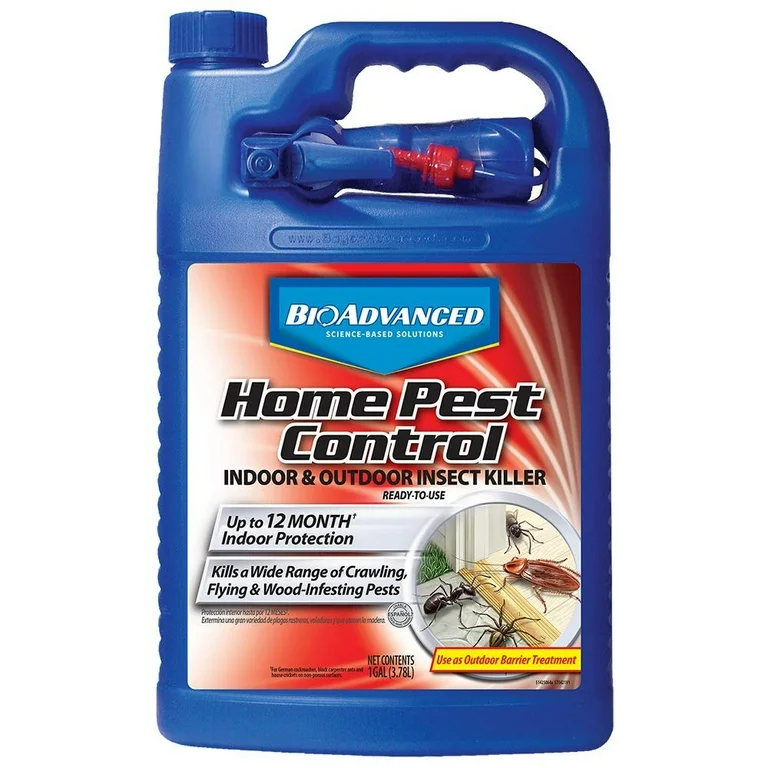Experienced A1 Exterminators Charlotte NC - Quick and Reputable Solutions
Wiki Article
Bed Insect Therapy Breakdown: Comparing Chemical Vs. Non-Chemical Solutions
In the realm of bug control, specifically when handling the consistent concern of bed pests, the choice between chemical and non-chemical treatment remedies can be a pivotal one. Both techniques supply distinct advantages and downsides, affecting factors such as efficiency, security factors to consider, and general price. By analyzing the nuanced details of each method, a more clear understanding of which path to pursue in addressing a bed insect invasion can be obtained.Performance of Chemical Therapies
Chemical treatments for bed pest invasions have been extensively acknowledged for their powerful and rapid efficacy in getting rid of these parasites. When taking into consideration the performance of chemical treatments, it is important to comprehend that they can offer a fast and complete service to a bed pest issue.In addition, chemical treatments have the benefit of providing recurring impacts, meaning that they can remain to remove bed bugs also after the preliminary application. This recurring activity is especially useful in combating any kind of possible re-infestations. Furthermore, the rapid action of chemical treatments can bring alleviation to people dealing with extreme bed pest infestations, enabling them to reclaim control of their home swiftly.
Safety Worry About Chemical Solutions
One critical element that calls for careful factor to consider when using chemical solutions for bed pest treatment is guaranteeing the safety and security of residents and the setting. Exposure to particular chemicals used in bed insect therapies can lead to breathing concerns, skin irritation, or various other adverse reactions, specifically in individuals with pre-existing problems or level of sensitivities.Additionally, the environmental influence of chemical services is an additional considerable factor to consider. Some pesticides used in bed insect therapies may be damaging to advantageous pests, wild animals, and communities if they leach right into the dirt or water systems. It is crucial to use chemical treatments deliberately, following safety and security standards, and thinking about much less harmful options to reduce these threats and guarantee the effective and secure management of bed pest infestations.
Benefits of Non-Chemical Techniques
Considering the possible security concerns and ecological influence connected with chemical solutions for bed pest therapy, discovering non-chemical techniques presents an encouraging alternative with numerous distinctive benefits. Non-chemical therapies are eco friendly, as they do not add to air or water pollution, making them a lasting option for pest control.Additionally, non-chemical remedies can be efficient in targeting bed pests, including hard-to-reach locations where chemical treatments might not permeate. Methods such as warm therapy, vacuuming, steam cleansing, and mattress coverings provide comprehensive eradication without the use of unsafe chemicals. Additionally, non-chemical approaches can be much less disruptive, needing minimal prep work and permitting quicker reentry right into treated locations. Generally, opting for non-chemical bed pest treatment techniques not only focuses on security and environmental defense but also guarantees efficient and comprehensive pest control.
Limitations of Non-Chemical Treatments

In addition, non-chemical therapies often need several applications to achieve look at more info effective eradication. This can be lengthy and might not always guarantee total elimination of all bed insects and their eggs, specifically in hidden or hard-to-reach areas.
Furthermore, the success of non-chemical therapies heavily counts on appropriate implementation and thoroughness, which can be testing for individuals without specialist expertise. Inadequate application of non-chemical approaches might lead to insufficient elimination, leading to consistent invasions and the requirement for extra treatments.
For that reason, while non-chemical treatments have their advantages, it is essential to acknowledge these limitations and consider them when identifying one of the Your Domain Name most efficient method for handling bed pest invasions.
Expense Contrast: Chemical Vs. Non-Chemical Options
Given the restrictions associated with non-chemical treatments, a necessary aspect to evaluate in the context of bed pest administration is the expense comparison between chemical and non-chemical options. In contrast, non-chemical treatments like warm therapy or steam can be a lot more pricey, with costs ranging from $1,000 to $6,000 for an entire home. While the first cost of chemical treatments might appear reduced, several treatments may be called for to fully remove the problem, possibly enhancing the general price.Verdict

Considering the potential safety and security issues and environmental effect linked with chemical solutions for bed bug therapy, exploring non-chemical methods provides an encouraging choice with several distinct benefits.Provided the constraints associated with non-chemical treatments, a crucial aspect to review in the context of bed bug administration is the price contrast between chemical and non-chemical options. In contrast, click here for info non-chemical therapies like heat therapy or steam can be extra expensive, with expenses ranging from $1,000 to $6,000 for a whole home. While the preliminary price of chemical treatments might seem lower, multiple treatments might be required to completely remove the invasion, potentially boosting the total price.In conclusion, when comparing chemical and non-chemical bed pest treatment choices, it is necessary to consider effectiveness, security, benefits, constraints, and cost.
Report this wiki page